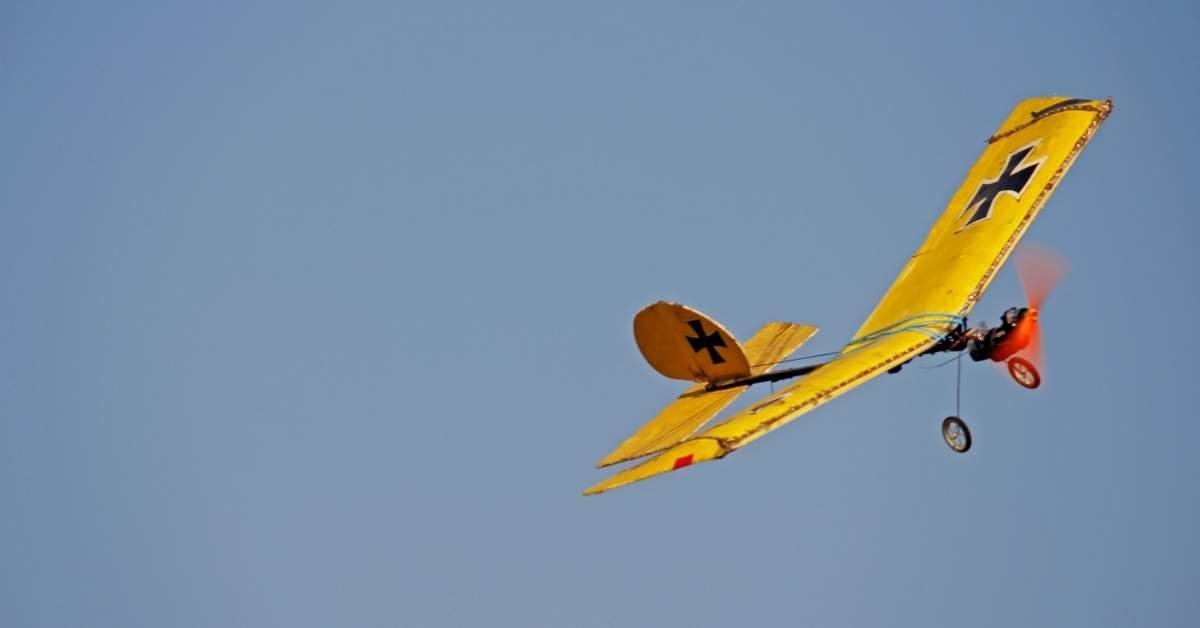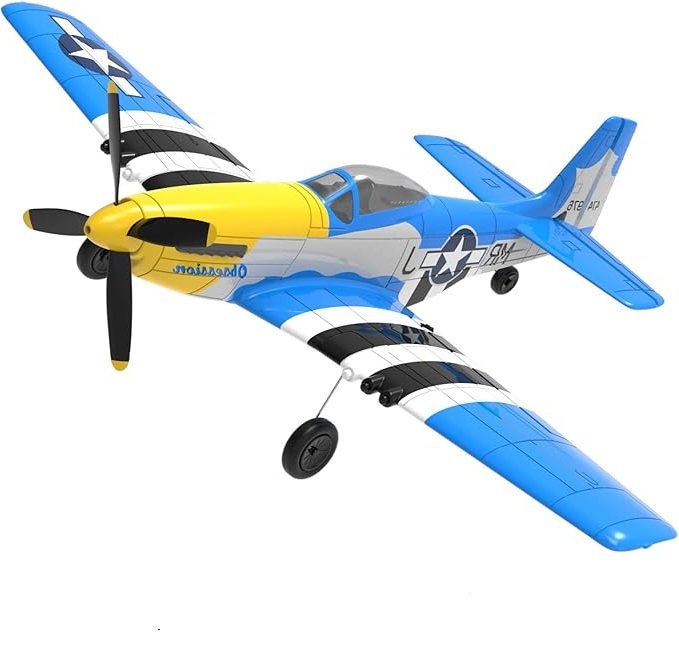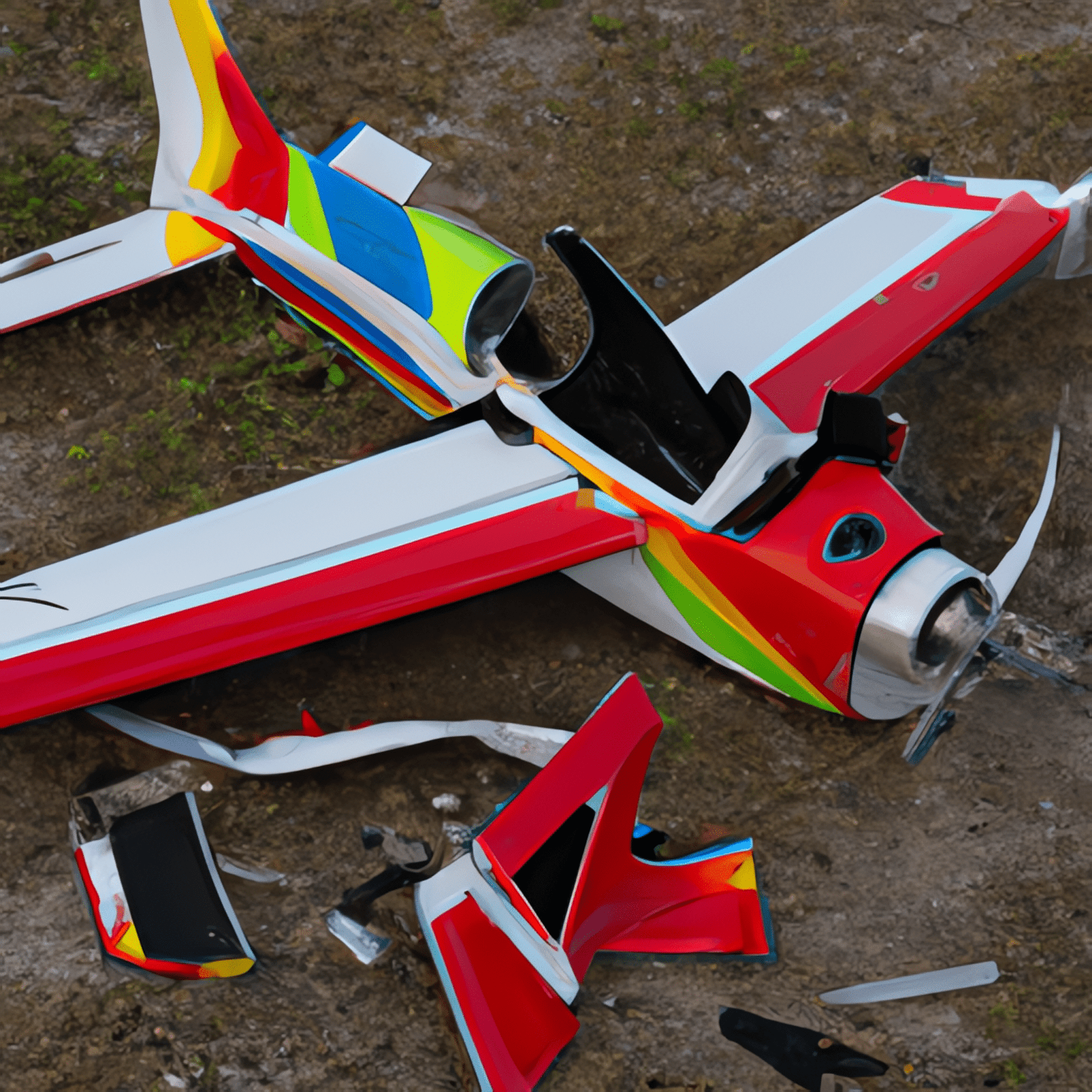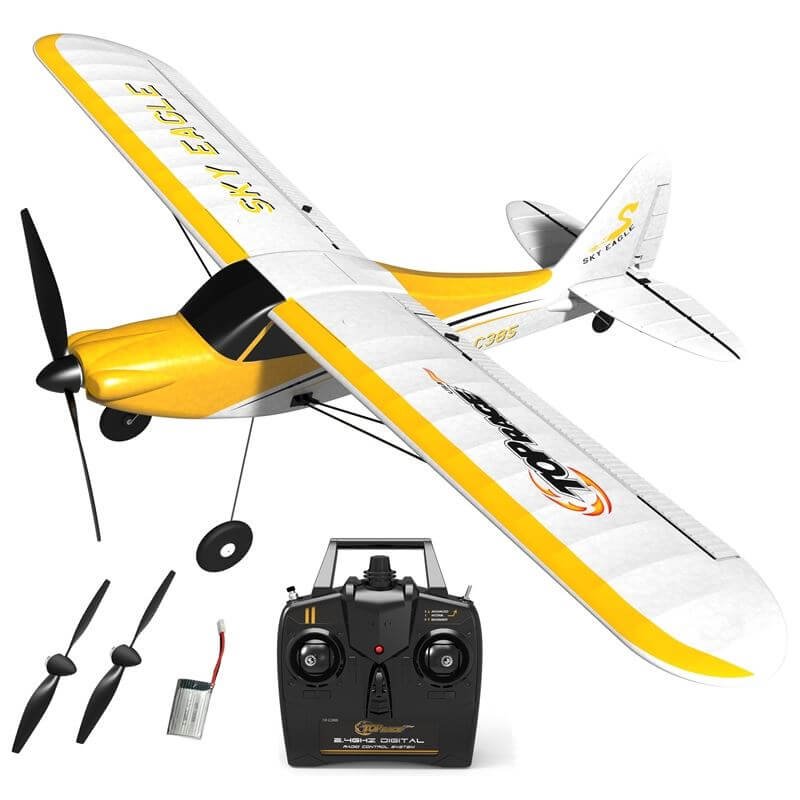As a beginner, I was keen to be able to fly my rc plane all year round, so I explored flying rc planes indoors. Here’s what I found, which should help you get the most out of your flying.
Slow-flying indoor rc planes are very popular, as they enable the pilot to use their skills within a confined space, such as a local hall or gym, without compromising on safety. There is a wide variety of types of slow-flying indoor plane, and popular models include the HobbyZone Duet and the ParkZone Ember 2 RTF.
First, though, let’s get to some popular questions about slow-flying indoor planes.
- Can I Fly My RC Plane Indoors?
- What Makes a Good Indoor Slow-Flying RC Plane?
- What Equipment Do You Need To Fly RC Planes Indoors?
- How Much Space Do You Need to Fly an RC Plane?
- RC Planes for Indoor Flying
- Ultra Micro RC Planes
- Indoor RC Airplane Flying Near Me
- What Else Do I need To Know About Flying RC Planes Indoors?
Can I Fly My RC Plane Indoors?
Yes, you can fly your rc airplane indoors, though you will probably have to compromise on size and speed because you have less space to control the rc plane to operate it safely, and without too much risk of damaging it. You will also have to find a suitable indoor space in which to fly – a large gym or school hall is ideal – which can most often be used through a local rc flying club.
What Makes a Good Indoor Slow-Flying RC Plane?
A good indoor slow-flying remote control plane — also known as a living room RC plane or a micro indoor RC plane– would depend on your context in terms of your needs, budget, and experience in RC flying.
Micro plane models are divided into beginner and professional models based on their features, although most mini plane models are designed for beginners.
Assuming you’ve considered your needs, budget, and experience level, the following are the key characteristics of good indoor slow-flying rc planes to look for:
- Slow-flying: an obvious point, but how slow is “slow”? If you’re a beginner, ensure the model flies no faster than your ability to change its direction quickly to avoid obstacles. Slow flyers would give you more time to react to mistakes and wrong inputs without damaging your plane. As you become more skilled, you can graduate to faster rc airplanes as your responses quicken to the conditions.
- Maneuverability: choose a 3- or 4-channel plane. 3 channels usually consist of thrust, rudder, and elevator, while the fourth channel would be the aileron function. This will give you control over the most important aspects of the flight of the rc airplane.
- Repair-ability: how easily repaired your rc airplane is will determine how much time you’ll be able to spend doing the enjoyable bit – flying. This is even more true for flying an rc plane indoors, as the chances of you having an accident are even greater indoors, compared to outdoors. Choose an rc airplane constructed in such a way as it will spring apart, rather than break – eg the wings attached to the fuselage with an elastic band, or easily replaceable propeller. You may want to consider insuring your model.
- Robustness: a robust airplane will withstand a considerable number of light collisions with stationary objects in a room or hall. Choose an rc airplane that is made from robust material such as foam.
What Equipment Do You Need To Fly RC Planes Indoors?
To fly an rc airplane indoors you’ll simply need the usual gear you take to the flying field outdoors, unless you’re intending to fly in your living room.
As indoor rc planes tend to fly very slow, you may wish to show off your flying skills with aerobatics or tricks using props such as tables to fly from and land on, or even fly through when stacked.
Practice taking off from and landing on one table as your runway, with pool noodles situated in different locations in the room as location points for turning your plane around. Do not land at the beginning or end of the runway but at the first quarter.
Once you’ve gotten good at this, stack another table on top of the first table and practice flying through the space in between the two tables.
A popular form of indoor trick flying has developed using what’s called 3D style planes. 3D planes are where the thrust of the prop is what keeps the plane airborne instead of the lift from the wing, and the airplane is kept near stalling, and in extreme cases in a hover, just like a helicopter.
If you do intend flying at home, you’ll need a very small, slow-flying rc airplane or drone which has the characteristics outlined above, unless your living room is cavernous.
Indoor models are listed below…
How Much Space Do You Need to Fly an RC Plane?
Specifically, unmanned aerial vehicle (UAV) safety guidelines recommend the following when flying indoors:
- The Flying Area should be no less than 20 ft (6 m) tall, 30 ft (9 m) wide, and 40 ft (12 m) long
- The Flying Area itself must be completely free of all persons, animals, and obstructions (such as
- electrical lines, lights, etc.) for the duration of the flight.
- Establish a Safety Line in front of which all flying takes place.
- Only the operator is allowed at or in front of the Safety Line.
- Spectators must remain at least 25 ft (7.6 m) behind the Safety Line at all times.
- Doors that open into the active Flying Area should have signs that say “DO NOT ENTER” placed on
- their outside and be closed.
- Netting or shielding must be used on the safety line if spectators cannot remain at least 25 ft. (7.6 m)
- behind the safety line. One way to accomplish this is to stand inside of a soccer goal that has been
- turned backward.
RC Planes for Indoor Flying
There’s a great range of rc planes that could be used for indoor flying, but if you’re a beginner it’s probably best to go for an RTF (ready to fly) foam plane and avoid a kit plane, such as the balsa planes which might be too fragile should you have an accident. Indoor foam planes are more robust.
To keep it simple, go for an electric model airplane.
Ultra Micro RC Planes
These are often called UMX, or ultra micro extreme planes, and are generally very light, made of foam with a wingspan often less than 12 inches. These can often be in the form of 3D style planes, or they can even be detailed micro rc planes which are faithful reproductions of full-scale airplanes.

ParkZone Night Vapor, for example, you can fly it in a large living room, a garage, a school gymnasium, or an indoor sports complex. It’s called a Night Vapor because the calmest weather is in the middle of the night, and ParkZone Night Vapors are small, lightweight, and very docile. More detail here.

The HobbyZone Duet is less than $100, has a bigger than average 28-inch wingspan, with all-foam wings, but weighs only 1.3 ounces which is very light. Its props are bendy and forgiving and is a fun plane to fly. It has no rudder and ailerons, though; it pulls off turning performance with differential thrust. It needs a bigger space to fly, at least 300 feet, but it helps a beginner train in basic RC flying principles. More detail here.
If it’s a Flite Test Flyer, you’d need a larger space than your living room. It’s not just a starter plane but
a platform model that helps you learn flight basics and flight building techniques with other plane designs.
This is also why beginners are advised to take on a slow-flying RC plane first, especially in indoor flying.
The slower you can make the plane fly indoors, the bigger the venue seems to feel.
The ParkZone Ember 2 RTF is also well-recommended for indoor flying for its small size, ultra-lightweight,
and slow-flying characteristics. It weighs less than an ounce, and more seasoned flyers can even fly it through small spaces easily and confidently. For beginners, it’s a good, solid start for developing their flying skills. It is best for flying in school halls, gymnasiums, aircraft hangars, or other similar spaces where regular indoor flying meets are held. More detail here.

One of the largest planes successfully flown indoors was the 8-foot-span A-10 Thunderbolt II, modeled after
the U.S. Air Force Close Air Support aircraft used in operations Desert Storm, Desert Fox, and Enduring
Freedom, and affectionately called the “Warthog”. You can watch how it performs here.
Of course, you would need to be an expert flyer to fly it like this indoors, and a huge indoor hall much bigger than your living room to fly it in. Probably a jet-powered model should be avoided by beginners hoping to fly indoors, due to their higher speed and power.
A smaller (48.5 x 14.25 x 10.25 inches) version of the Warthog replica is available, though, and is touted for its easy-to-fly and best handling performance features. Still, it is recommended for more advanced flyers, and really best flown outdoors to maximize its performance capabilities.
Indoor RC Airplane Flying Near Me
So, where can I fly slow-flying indoor rc airplanes near me?
Generally, you should find a place indoors where you can do your flying alone, away from other people and pets, and breakable furnishings (like chandeliers and hanging lamps) and appliances, with eye protection for the plane operator and spectators (if there are other people who need to be in the same area). Indoor tennis or basketball courts are good recommended flying areas.
If you’re in the US, take a look at the Academy of Model Aeronautics (AMA) website here, and put in your location to find a club near you that may organize indoor rc flying.
If you’re in the UK, check out the British Model Flying Association (BMFA) website here, and approach your local rc airplane flying club.
For more information on where to fly your rc airplane, check out this post, here.
What Else Do I need To Know About Flying RC Planes Indoors?
If you’re flying at an indoor flying event with other flyers, it would be best to find out first what others are
flying. If there will be lots of FT Flyers there for example, you can match them or get into something to
complement them. If a lot of Vapors will be flown, you don’t want to bring an FT Flyer into an environment
of Vapors or you’ll end up chewing up those planes. Bring a Vapor or another similarly-matched slow-flying
plane instead.
If you’re a beginner RC flyer, it is recommended, too, that you familiarize yourself with the Academy of
Model Aeronautics (AMA) Safety Program and its Suggested RC Flying Site Specifications. Although they
do not particularly refer to indoor flying, they cover all the standards observed by RC flying enthusiasts all
over the world.
Even if you’re only indoor flying for now, or indoor flying because of the approaching winter
months, surely you would not want to fly indoors forever. As you gain experience and flying skills, you
would want to fly your RC planes outside with fellow enthusiasts, in the bigger, wider world and airspaces
out there.




